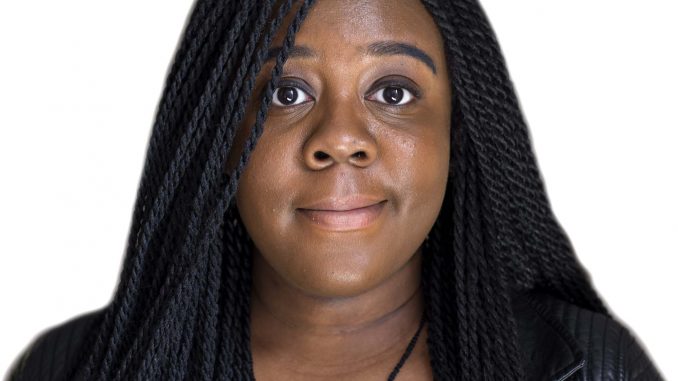
 When I was a little girl, my grandmother would take me to the McDonald’s on Broad and Arch streets on days she got off early from her job in Center City. We did not have a car to drive home afterward, so we would catch the 38 bus at the corner of 15th Street and John F. Kennedy Boulevard.
When I was a little girl, my grandmother would take me to the McDonald’s on Broad and Arch streets on days she got off early from her job in Center City. We did not have a car to drive home afterward, so we would catch the 38 bus at the corner of 15th Street and John F. Kennedy Boulevard.
On our way to the bus stop, I remember always walking past a huge bronze statue just before the front steps of the Municipal Services Building. The statue intimidated me. It looked like it was going to fall over and crush me. But I did not recognize this daunting figure, so I asked my grandmother who it was supposed to be.
“Frank Rizzo,” she said.
Rizzo was the police commissioner of the Philadelphia Police Department in the 1960s and the mayor of Philadelphia from 1972 until 1980. The statue of Rizzo, which was donated to the city, first appeared in the late 1990s.
Recently, that same statue of Rizzo has become the center of a debate about how society reassesses history. An online petition started by Erica Mines of the Philly Coalition for REAL Justice, which organizes under Black Lives Matter, is calling for the removal of the statue. The anti-police brutality group asserts in its petition that Rizzo was “an unrepentant racist who stopped at nothing to torture and hold Philadelphia’s African-American community as his personal hostages.”
Rizzo’s statue needs to be removed because of the pain it invokes for both older and younger generations of African-Americans in Philadelphia.
“It’s psychological warfare,” said Dr. Aaron X. Smith, an assistant professor of Africology and African American studies. “I don’t think it’s a good thing for children to see about our society, especially young African-American children.”
One of the many instances of Rizzo’s poor relationship with African-Americans in the city occurred in 1967, when he was commissioner. Rizzo organized a large group of police outside of the Board of Education building, where a group of students was protesting in favor of adding black history to the school district’s curriculum. Local newspapers reported that Rizzo told his police officers to “get their black a—s,” and a fight ensued between protesters and police.

Perhaps his most infamous moment as police commissioner came in 1970 though, when Rizzo authorized a strip search on members of Philadelphia’s chapter of the Black Panther Party with news camera crews nearby. Rizzo suspected these members had been involved in the recent murder of a police officer, but they were later found innocent. Still, the images from the strip search ended up printed in the city’s newspapers.
These are just two of many recounted incidents involving Rizzo and the African-American community that at best remain questionable. The removal of Rizzo’s statue is not only important to the legacy of African-Americans who lived under his power, but also in accurately representing our city.
According to the City of Philadelphia’s Parks and Recreation website, there are nearly 800 sculptures, fountains, mosaics and memorials in Philadelphia, including the statue of Rizzo.
But there are only 17 sculptures that document African-American experiences, and only two of these sites show African-Americans born in Philadelphia.
According to the last U.S. Census, there are about 660,000 African-Americans living in the city of Philadelphia, making up about 43 percent of the city’s population. African-Americans comprise almost half of the residents in the city, and yet there are few statues that represent African-Americans.
But somehow, the figure of Rizzo, known for his racially divisive policies, is allowed to remain on display at a prominent government building. The city, however, is beginning to correct this discrepancy is representation.
In 2014, the city announced the building of a statue of Octavius Catto in front of City Hall. Catto, a 19th-century civil rights activist, fought for desegregation in transportation and sports in the city. He was murdered on Election Day 1871 by an opponent of his work.
“The [Catto] statue I think is important, for the generation of ancestors,” Smith said. “Just like people in America celebrate people’s birthdays, I think it’s equally important for African people to celebrate people.”
Catto’s statue, which will be erected by the end of this year, will be the first public art of an African-American individual in the city. Of course, one statue will never be enough to showcase the roots that many African-Americans have planted in this city, but it’s a start.
In the future, Philadelphia needs to continue honoring citizens like Catto who inspired change and unity, not those like Rizzo who inspired fear and division.
Jaya Montague can be reached at jaya.montague@temple.edu.


Be the first to comment